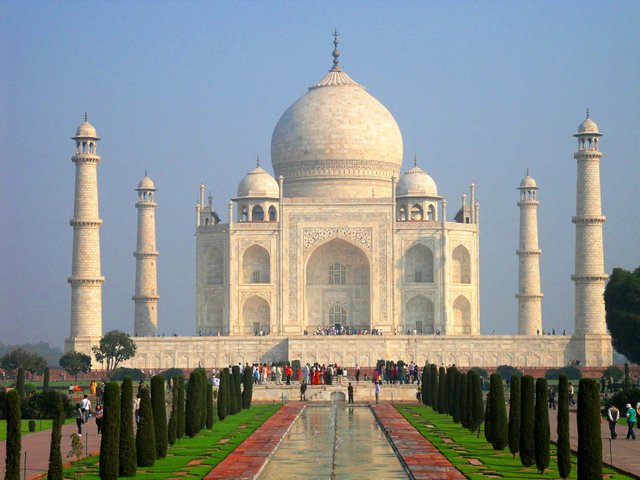Taj Mahal ( islamic architecture )

In 1631 Mumtaz Mahal, the third and favorite wife of the Mughal emperor Shah Jahan (reigned 1628–58), died while giving birth to the couple’s fourteenth child. Devastated, the emperor commissioned the Taj Mahal, a massive mausoleum complex on the southern bank of the Yamuna (Jumna) River that ultimately took more than 20 years to complete. Today the Taj Mahal is the most famous piece of Islamic architecture in the world, with the possible exception of the Dome of the Rock in Jerusalem. The monument is remarkable both for its size (the finial of the dome of the central mausoleum stands 240 feet [73 meters] above ground level) and for its graceful form, which combines elements of Indian, Islamic, and Persian design. From afar, viewers are dazzled by the white marble of the central tomb, which appears to change color with daylight. Up close, the building is richly decorated with Arabic calligraphy and inlays of semiprecious stones. Inside there are cenotaphs (false tombs) for Mumtaz Mahal and Shah Jahan; the actual tombs are in a chamber beneath the ground floor. As early as the 1660s, travelers reported that Shah Jahan had intended to build a matching mausoleum for himself out of black granite on the opposite bank of the Yamuna; modern scholars, however, regard this as a legend with no basis in fact.
Cool
tnks
wwwwwwppppppppppp
?